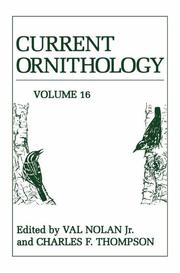Detailansicht
Current Ornithology, Volume 16
Current Ornithology 16
ISBN/EAN: 9780306464867
Umbreit-Nr.: 1622877
Sprache:
Englisch
Umfang: xx, 424 S.
Format in cm:
Einband:
gebundenes Buch
Erschienen am 30.11.2001
€ 160,49
(inklusive MwSt.)
Nachfragen
